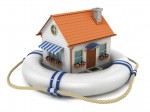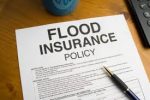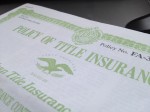Tips to Reduce Home Insurance Costs in South Florida?

- Have a residence with no smokers
- Pay your premium upfront
- Pick paperless billing
- Sign up for automatic payments

Serving South Florida


Filed under: 4 Point Inspection, Blog, Boca Raton real estate, Exclusive Buyer Agency, Exclusive Buyer Agent, First Time Homebuyers, Flood Insurance, Florida Real Estate, Home Buyer Advice, Home Buyers, Home Maintenance, home safety, Homebuyer Advice, Homeowners Insurance, Hurricane Preparedness, Insurance Claims, Real Estate, real estate news, South Florida Real Estate by Kim Bregman
Comments Off on Tips to Reduce Home Insurance Costs in South Florida?

Filed under: Blog, Boca Raton real estate, Exclusive Buyer Agent, First Time Homebuyers, Flood Insurance, Florida Real Estate, Home Buyer Advice, Home Buyers, Home Maintenance, Homebuyer Advice, Homeowners Insurance, Insurance Claims, Real Estate, Real Estate Investment, real estate news, Real estate trends, South Florida Real Estate by Kim Bregman
Comments Off on What Is Not Covered Under Standard Homeowners Insurance?

If a flood swamps your home, will insurance cover the damage? That depends on the value of your home, the amount of water damage and whether you have a flood insurance policy.
Let’s look at some persistent myths about flood insurance.
Myth: You must live in a flood plain to get coverage.
If you live in a flood plain, your mortgage company will likely require you to buy flood insurance. But you can purchase it even if you don’t live within a flood zone. “Almost anybody can get flood insurance who wants flood insurance,” says Chris Hackett, director of personal lines for the Property Casualty Insurers Association of America. The price through the federal flood insurance program is based on standardized rates and depends on the home’s value and whether or not it’s in a flood plain.
Myth: Flood insurance covers everything.
When it comes to the physical structure of your house, federal flood insurance policies top out at $250,000. If you have a $300,000 house that’s a total loss because of a flood, the most you can recoup through the program is $250,000 to cover the structure itself. For your personal possessions, the cap is $100,000 under the federal program.
Myth: My homeowners policy covers floods.
“Unfortunately, a lot of folks may be under the impression that their standard homeowners policy might cover flood damage,” Hackett says. But the standard policy does not! The typical home insurance policy doesn’t cover earthquakes or floods. So a homeowner wanting coverage for either of those disasters will need to pick up separate, specific coverage against those types of disasters.
Myth: Water damage is water damage. When it comes to your insurance, not all water damage is the same.
If there’s a storm and your “roof comes off and water comes through, that would be covered under your homeowners policy,” Hackett says. “Versus a flood situation where the water is rising from an over flowing riverbank overflows or an unnatural amount of rain that is rising from the street.
Myth: Flood maps don’t change.
Flood plains (and flood plain maps) change and evolve. Just because you weren’t in a flood plain when you bought your home a few years ago doesn’t mean you’re not in one now.
For more information, visit FloodSmart.gov.
Filed under: Blog, Exclusive Buyer Agent, Flood Insurance, Florida Real Estate, Home Buyer Advice, Home Buyers, Homebuyer Advice, Homeowners Insurance, Insurance Claims, Real Estate, Real Estate Investment, real estate news, South Florida Real Estate by Kim Bregman
Comments Off on Flood insurance: Facts and Fiction

As Hurricane Matthew churns through the Atlantic with a possible landfall in Florida, the Property Casualty Insurers Association of America (PCI) urged property owners to take some basic precautions to protect themselves and their belongings.
“With the potential for Hurricane Matthew to hit somewhere along the East Coast, the Governor has issued a state of emergency for all 67 counties in Florida,” says Logan McFaddin, PCI Florida regional manager. “This caliber of a system could bring major flooding and damages along Florida’s East Coast.”
In addition to making sure residents have emergency kits and plans ready, PCI urges residents and business owners to take precautionary measures to prevent damage to vulnerable property. Flooding from storm surge during hurricanes and tropical storms can be especially dangerous for residents along the coast and further inland. PCI recommends that homeowners who sustain damage report it as early as possible to their insurance company.
McFaddin says flood insurance is advisable, but “there is typically a 30-day waiting period between the date of purchase and when flood coverage will go into effect.”
PCI hurricane precautions
Review your property insurance policy, especially the “declarations” page, and check whether your policy pays replacement costs or actual cash value for a covered loss.
Inventory household items, and photograph or videotape them for further documentation. Keep this information and insurance policies in a safe place.
Keep the name, address and claims-reporting telephone number of your insurer and agent in a safe and easily accessible place.
Protect your property by covering all windows with plywood or shutters, moving vehicles into the garage when possible, and placing grills and patio furniture indoors.
Keep all receipts for any repairs so your insurance company can reimburse you.
Check with your insurance adjuster for referrals to professional restoration, cleaning and salvage companies if additional assistance is needed.
Make sure watercraft are stored in a secure area, like a garage or covered boat dock. A typical homeowners policy will cover property damage in limited instances for small watercraft, and separate boat policies will provide broader, more extensive property and liability protection for larger, faster boat, yachts, jet skis and wave runners.
There will certainly be an extended period with power outages. After the storm, empty out your freezer and refrigerator of all perishable items and put in covered trash receptacles. Unplug all appliances and electronics since there will certainly be surges when power is restored.
Be mindful of downed power lines when going outside after the storm. Broken branches can also be dangerous and will continue to fall given the winds and rain that follow the storm. Remove debris from your property to ensure continued safety.
Filed under: Blog, Exclusive Buyer Agent, Florida Real Estate, Home Buyer Advice, Home Buyers, Home Maintenance, Homebuyer Advice, real estate news, South Florida Real Estate by Kim Bregman
Comments Off on Prepare for Hurricane Matthew’s Aftermath

Protecting your home investment:
A home is usually the largest single investment any of us will ever make. When you purchase a home, you will purchase several types of insurance coverage to protect your home and personal property. Homeowners insurance protects against loss from fire, theft or wind damage. Flood insurance protects against rising water. And a unique coverage known as title insurance protects against hidden title hazards that may threaten your financial investment in your home.
Oversimplified, title insurance insures a homebuyer — and a mortgage lender — against loss resulting from title defects, whether these defects are known or unknown at the time of the sale or the refinance. In the language of the title industry, the insurance covers both “on record” and “off record” problems.
Protecting your largest single investment:
Title insurance is not as well understood as other types of home insurance, but it is just as important. When you purchase a home, instead of purchasing the actual building or land, you are really purchasing the title to the property – the right to occupy and use the space. That title may be limited by rights and claims asserted by others, which may limit your use and enjoyment of the property and even bring financial loss. Title insurance protects against these types of title hazards.
Other types of insurance that protect your home focus on possible future events and charge an annual premium. On the other hand, title insurance protects against loss from hazards and defects that already exist in the title and is purchased with a one-time premium.
There are two basic kinds of title insurance:
Most lenders require mortgagee title insurance as security for their investment in real estate, just as they may call for fire insurance and other types of coverage as investor protection. When title insurance is provided, lenders are willing to make mortgage money to lend.
Owner’s title insurance lasts as long as you, the policyholder – or your heirs – have an interest in the insured property.
When your seller purchased the house several years ago, his title insurance policy covered him — and his lender — for all risks (defects) that existed at time he took title; the policy did not cover future defects.
During the time the Seller owned the property did a mechanic place a mechanic’s lien against the property?
Did a creditor obtain a judgment against the seller and have that judgment recorded? Did the home get sold at a tax sale, without the seller’s knowledge? Did someone forge the seller’s name to a deed and sell the property to a third party? Or did someone accidentally place a lien against your property (Lot 657) when they really meant to place the lien on Lot 567?
Strange as it may sound, these things do happen. Your lender wants assurances that should you not be able to make the monthly mortgage payment, and the lender has to foreclose on your property, that you have clear title. Your new lender is willing to make you a loan; however, since you cannot categorically advise the lender that you have clear title, the lender will insist that you obtain a title insurance policy in favor of the lender.
What does your premium really pay for?
An important part of title insurance is its emphasis on risk elimination before insuring. This gives you, the policyholder, the best possible chance for avoiding title claim and loss.
Title insuring begins with a search of public land records affecting the real estate concerned. An examination is conducted by the title agent or attorney on behalf of its underwriter to determine whether the property is insurable.
The examination of evidence from a search is intended to fully report all material objections to the title. Frequently, documents that don’t clearly transfer title are found in the chain, or history that is assembled from the records in a search. Here are some examples of documents that can present concerns:
Through the search and examination, title problems are disclosed so they can be corrected whenever possible. However, even the most careful preventative work cannot locate all hidden title hazards.
Hidden title hazards – your last defense
In spite of all the expertise and dedication that go into a title search and examination, hidden hazards can emerge after closing, resulting in unpleasant and costly surprises. Some examples of hazards include:
The list, unfortunately, can go on and on. There are numerous instances where title to real estate has been found to be defective — either based on substantive grounds or technical, legal procedural reasons (such as improper indexing, misfiling or failure to comply with local recording requirements).
Title insurance offers financial protection against these and other covered title hazards. The title insurer will pay for defending against an attack on title as insured, and will either perfect the title or pay valid claims – all for a one-time charge at closing.
Your home is your most important investment. Before you go to closing, ask about your title insurance protection, and be sure to protect your home with an owner’s title insurance policy.
Filed under: Blog, Exclusive Buyer Agent, First Time Homebuyers, Florida Real Estate, Home Buyer Advice, Home Buyers, Home Financing, Homebuyer Advice, House Closings, Real Estate, Real Estate Closings, real estate news, Real estate trends, Relocation, Title Insurance, western north carolina real estate by Kim Bregman
Comments Off on What Homeowners Need To Know About Title Insurance

One of the costs of owning a home that buyers need to consider in their budgeting is the cost of insuring the home. A standard policy will cover exterior and interior damage from incidents like vandalism, fire, wind and lightning. It also covers loss of use expenses, damage to structures like sheds or gazebos, and liability and medical costs if someone is injured on your property.
Common exclusions are flood, hurricane and earthquake damage, but you may be able to buy additional coverage for these if desired or required.
Policies vary widely, but in general, homeowners insurance covers the following areas:
Your Structure – Your home itself is protected against damage from fire, wind, smoke, lightning, theft, vandalism and just about anything else that isn’t specifically excluded.
Your Possessions — Your belongings are also covered under your homeowners policy, including losses that happen away from home, for example, if your camera is stolen while on vacation. Keep an inventory everything you own so any claims can be handled accurately and efficiently. Write down serial numbers as well as the date of purchase and original cost of the items, or document on video. Keep the inventory in a fireproof safe or somewhere outside your home, where it can be accessed if your home should be destroyed.
Liability — This aspect of your homeowner’s insurance protects you against lawsuits arising from damage you, your family members or your pets may cause to other people. Liability coverage would pay not only for the actual damage, but also for the cost of defending you in court and for any court-ordered damage payments.
Replacement Cost Coverage – Your insurance would pay what it costs to replace the property with an identical or similar item. For example, if a bicycle was stolen from your garage, your insurance would pay to replace it with a new bicycle of the same or similar make and model (less your deductible).
Actual Cash Value – Your insurance would pay what it costs to replace the property with an identical or similar item, once that item has been devalued for deprecation. To continue the example above, instead of paying for a new bicycle, your insurance would give you the cash value of a used bicycle of the same make and model that was stolen (less your deductible).
Extended Replacement Cost — This type of coverage applies only to the structure of your home. Even though it has the word “replacement” in the name, you’re covered only up to set limits, which may not be enough to pay for the entire value of your home. If you want the assurance that the full replacement value of your home would be paid in the event of disaster, ask for “guaranteed replacement cost”.
If you’ve purchased a condo, or townhouse, ask your insurance agent about specific homeowner policies designed for these types of homes. You’ll want to purchase coverage above the association policy, but the additional coverage is usually very affordable.
Work with your insurance agent to determine how much and what type of coverage is right for your family and your new home. Be sure to ask what discounts may be available, such as rate reductions for smoke alarms, fire extinguishers, security systems and nonsmoking households.
After purchasing your homeowners insurance, make it a practice to review your coverage every year to be sure that it’s keeping up with increasing real estate values and any additions or improvements you may have made. Projects like building a porch or another bathroom can add significant value, so you may need to adjust your policy if you’re planning to renovate your new home. Upgrades (like a new roof) can lead to discounts if they mitigate risks, but potentially hazardous features (like a pool) may require up to $500,000 in coverage.
It may seem costly, but protecting what’s likely the largest investment you’ll make in your lifetime is worth it – and peace of mind is priceless.
Filed under: Blog, Exclusive Buyer Agent, First Time Homebuyers, Home Buyer Advice, Home Buyers, Real Estate by Kim Bregman
Comments Off on Homeowners Insurance Primer
 Kim N. Bregman
Kim N. BregmanAll information is provided by the licensed REALTOR®/Broker/Agent. This information is not verified for authenticity or accuracy and is not guaranteed. This website is not responsible or liable in any manner for any content posted herein or in connection with our services. Information is not guaranteed and must be confirmed by the end user.
Copyright © 2024 OPTIMA PROPERTIES. All Rights Reserved. Privacy Policy | Intellectual Property Rights | Sitemap | Real Estate Website Design & Internet Marketing by Agent Image